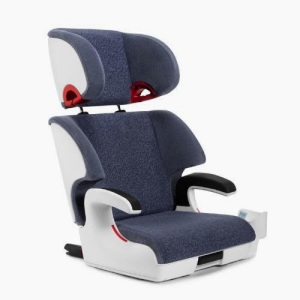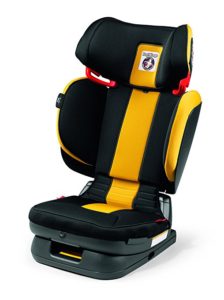
It’s not easy being a parent today; while studies have shown that mortality among children are at all time lows, watching the news has us more afraid than possibly any other generation in modern history. Drugs, alcohol, sex, guns, bullying, standardized testing, terrorism–the list goes on and on. I try to make the world a bit more manageable by focusing on best practices in car safety and car seat safety for children, which is why you’ll find articles on just about everything related to keeping kids and adults safe in and around cars on The Car Crash Detective.
What are general best practices for children in car seats?
We’ve looked at how infants, toddlers, and preschoolers should sit in cars (i.e., rear-facing, just as in Sweden) and we’ve talked about when kids can switch from rear-facing to forward-facing or boostering (from 5 onward, but later is also fine). On the other end, we’ve looked at when and how teenagers should start driving alone (as little, as late, and with as much training as possible, as in Norway), and in the middle, we’ve considered when kids no longer need booster seats (typically not until at least 10 to 12). Today’s article will touch on that last point in more detail. Specifically, we’ll consider the situations in which middle schoolers and pre-adolescents (i.e., 6th, 7th, and 8th graders, or 10-13 year olds) may or may not need booster seats.
Why don’t most parents consider booster seats for middle schoolers?
In general, middle schoolers, or children between 11 and 13, are almost never found in car seats in the United States and Canada, despite the fact that a number of them might still benefit from having boosters. This typically occurs due to one of two reasons: either parents see their kids as big enough to sit safely without them or children refuse to sit in car seats after a certain age out of a desire to imitate parents, siblings or peers, or out of a fear of being ridiculed by the latter.
The fact that parents typically let kids sit without boosters by middle school isn’t surprising since parents generally place kids in the front seat by 2nd grade, even though this isn’t safe. Nor is it surprising that children resist sitting in car seats when given a choice, as children are notoriously poor decision-makers when it comes to auto safety (as are many adults as evidenced by speeding rates, annual mileages, alcohol consumption, and seat belt compliance). As usual, it’s up to us as adults to learn and enforce best practices, as society will take far too long to catch up in the mean time.
When would a middle schooler need a booster seat?
When it comes to middles schoolers, they do benefit from booster seats when they haven’t yet passed the 5-step test. While the NHTSA recommends kids stay in boosters until they fit seat belts well, which they note typically occurs when kids are around 4 foot 9 inches, or 57 inches, this guideline isn’t always going to be enough. And while plenty of states permit kids to use adult seat belts much earlier (some don’t even have front seat age requirements past the one year rear-facing limit), we can’t look to the government for guidance here, because best practices in car safety and car seat safety are years away from our laws. The 5-step test is a much better guide, as it’s based on…best practices.
As a reminder, here’s what your pre-teen should look like and be able to do 100% of the time without a booster seat. If you don’t see these positions, your middle schooler isn’t yet ready to use an adult seat belt. While I’ll use the pronoun “she” below, the guide applies equally to boys and girls.
1.) When she’s sitting, her shoulder belt should cross directly over the middle of her shoulder rather than across her neck or on the outer part of her arm.
2.) The lap belt should sit low on her thighs rather than over her waist or above her stomach.
3.) Her bottom should sit at the intersection of the lower and upper vehicle seats; there shouldn’t be a gap between her back and the back of the vehicle seat.
4.) Her knees shouldn’t bend until they are past the bottom seat’s edge, and her feet should rest flat on the floor rather than fully or partially in the air.
5.) She should be able to sit in this position for as long as the vehicle is in motion without moving; she shouldn’t find this position uncomfortable to maintain.
Every one of these factors should be in place before your son or daughter switches to an adult seat belt, and all of them overrule the general height guidelines. It doesn’t mean something is wrong with your child if she doesn’t meet the guidelines yet; it just means she isn’t ready. She will be soon; virtually all typically developing kids are ready to pass the 5-step test by their 13th birthdays–which, not coincidentally, is when kids can sit in the front seat, per the NHTSA.
If my pre-teen needs a car seat, which do you recommend?

If your not-quite-teenager doesn’t pass the booster test, you’ll want to buy a booster seat. For older children, any high back or backless booster will work as long as it lifts your child enough for her to pass the 5-step test as described above. A great example of a backless booster is the Clek Olli. It’s discreet and comes in a wide range of colors for picky pre-teens.

If you’re looking for a seat for a younger child (one at least 4 years old) that can be used until she no longer needs a booster seat of any kind, you’ll want to start with a high back booster, as they’ll position kids properly even when they’re asleep, which is safer for younger kids.
The three best high back boosters on the market are the Clek Oobr, Maxi-Cosi RodiFix, and Peg Perego Viaggio Flex 120. Of the three, the Oobr has the advantage of being able to split into a backless booster if you’d like that option down the road. However, all three seats will last kids throughout the booster years until they’re ready for adult seat belts.
Remember: the goal here isn’t to annoy your pre-teens, but to keep them safe. Most aren’t going to need car seats at this point, but some will. And that’s okay. Keep being the beacon of best practices; you’ll have rougher waters ahead in a few years, and emphasizing the importance of responsibility now will help shape their decision-making later.
 If you find my information on best practices in car and car seat safety helpful, you can buy my books here or do your shopping through this Amazon link. Canadians can shop here for Canadian purchases. Have a question or want to discuss best practices? Send me an email at carcrashdetective [at] gmail [dot] com.
If you find my information on best practices in car and car seat safety helpful, you can buy my books here or do your shopping through this Amazon link. Canadians can shop here for Canadian purchases. Have a question or want to discuss best practices? Send me an email at carcrashdetective [at] gmail [dot] com.

